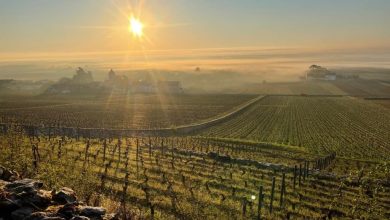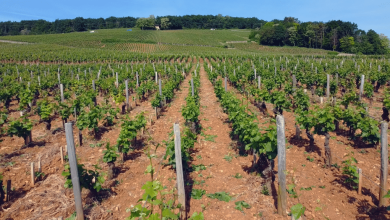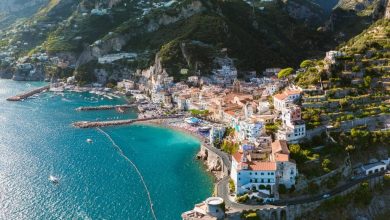Ode to Rhône river wine
Proximity to a body of water is crucial for grapes to thrive in many regions worldwide. The benefits of rivers, lakes, and even seas and oceans are astounding.
The Rhone River is a testament to this incredible force of nature.
One element connects the steep slopes of the Northern Rhône Valley, which can only be cultivated and harvested manually, and the flat plains of the Southern Rhône Valley.
The mighty Rhône River

The 812-kilometre-long river begins at the Rhône Glacier in Switzerland and travels the entire length of the Rhône Valley, connecting the northernmost appellation of Côte-Rôtie, just below Vienne, and flowing southwards through Costières de Nîmes, which leads to the Mediterranean Sea.
The terroir in the Rhône Valley is some of the most diverse and unique in the world.
Over 700 million cubic feet of silt and other geological materials, including millions of-year-old fossils, are swept down the length of the river annually. These include alluvial deposits of silt, gravel, limestone, and fossils.
This constant arrival of rich soils nourishes the vines in the vineyards, and this complex mix of different soils is essential to the character of the wines produced in the Rhône.
The Rhône River has a more significant influence in the Northern Rhône as the vineyards in the north grow on very steep slopes with very harsh winters and hot summers.
- The river helps to regulate the temperatures of the surrounding vineyards.
- It cools the vines by absorbing heat during the day.
- The vines are kept warm at night when the river releases the heat into the atmosphere.
- As a result, the temperatures in the vineyards remain relatively constant, which is crucial to maintaining healthy vines and essential during the period when the fruit develops and matures.
- The constant air currents from the river create moderate and balanced temperatures, which help lower the risk of frost damage to the vines during the colder periods of the year.
- The reive acts as a funnel for the Mistral, the everpresent strong wind that runs the river from north to south
What do the effects above equate to?

- These increased levels of sunlight boosted photosynthesis in the grapevines, resulting in higher concentrations of flavours and sugars in the ripening fruit. This wouldn’t have been possible without the Rhone River.
- The cooling breezes that blow across the river help alleviate heat stress, which is especially important during the development and ripening of Viognier grapes grown in Condrieu and Château-Grillet.
- It provides essential water should it be required during the viticultural process, which contributes to producing only the finest grapes, translating into the exceptional wines for which the Rhône Valley is famous.
In the Southern Rhône:

- The moderation of the river’s temperatures plays a vital role. This results in a more even bud break and helps to cool the sweltering southern Mediterranean temperatures, allowing the vines and grapes to develop to perfection.
- The Mistral helps lower the often searing Mediterranean summer temperatures and prevent mildew and other fungal diseases detrimental to vines. This makes it possible for many Southern Rhône producers to farm organically easily.
- Historically, the Rhône River has helped grow grapes and was a vital trading route for transporting the finished wine to clientele.
Rhone Valley wines vary in style offering something for everyone to love
Discover the world’s finest wines with Crurated’s exclusive membership. Access rare allocations, secure storage, and personalized wine concierge services. Join today the elite club of discerning wine enthusiasts.




